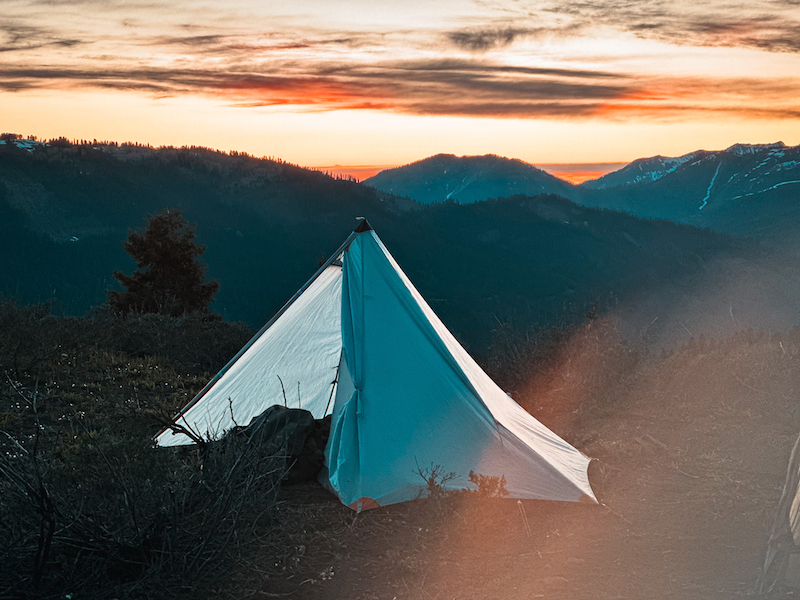
Imagine the year is 2300. The world has succumbed to an apocalypse and the only sign of life are cockroaches and whitetail. Only a few remnants of civilization remain: ‘80s Tacomas, Nokia phones, and the Argali Owyhee 1P tent.
Argali Owyhee
All joking aside, I had the pleasure of testing this one-person tent from Argali Outdoors (a Rokslide sponsor) this spring and summer in some of the most variable conditions the Wyoming backcountry had to offer. I put 10 days on the tent. This spring’s 5-day trip, we chased black bears in the backcountry from 6,500 to 9,000 feet in elevation. I also summer scouted my ewe sheep tag in the Wyoming high country then went on to use the Owyhee as basecamp to look for bighorns at 10,000+ feet in elevation. Specs available here.
Temperatures ranged from near freezing with wind, hail, and torrential downpours to the upper 70’s and sunny.
This 1-person tent is built for fast and light solo travel. Using a trekking pole to pitch the tent saves weight you would otherwise be adding, and the tarp itself packs smaller than a JetBoil. Add the insert for keeping bugs away and six tent stakes to hit a a total weight at 2 lbs, 4 ounces – not including the trekking pole. This complete two-wall shelter fits nicely in the crevices of your pack since it is in two separate bags, not one unit like a traditional freestanding tent.
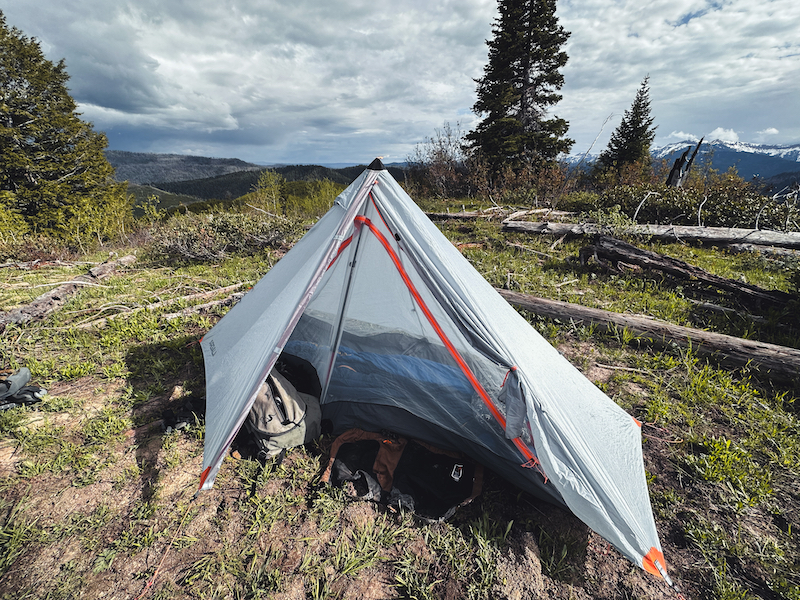
The Pitch
On the spring bear backpacking trip, we pitched the tents and slept on four different locations, all on ridge tops where we could glass for bears from camp. Finding a place to pitch this small foot-printed tent was easy and its longer, skinnier shape than traditional freestanding tents was advantageous on little saddles along ridge lines.
Set Up
There is an order of operations with pitching the tent and the nest as I used them along this trip. First, lay out the insert. Then lay the outer layer of the tent over the top and clip them together. Next, pin the four corners where you want them. It is better to give yourself a little more slack than you think to allow for airflow. Lastly, put your trekking pole or other tent pole in the insert and tarp at the same time before stretching the guy-out for the door, and then securing the rest of the guy-outs.
I noticed every time I got this order of operations mixed up, I had to go back. For instance, it is much easier to stand up the center pole and already have the insert connected than go back and try to clip them later.
I noticed the first night I slept in the tent, I pitched it much too close to the ground for good airflow. While we got a good dose of rain that night, the condensation on the inside built up significantly and whenever I bumped the mesh net, it showered on me and my gear.
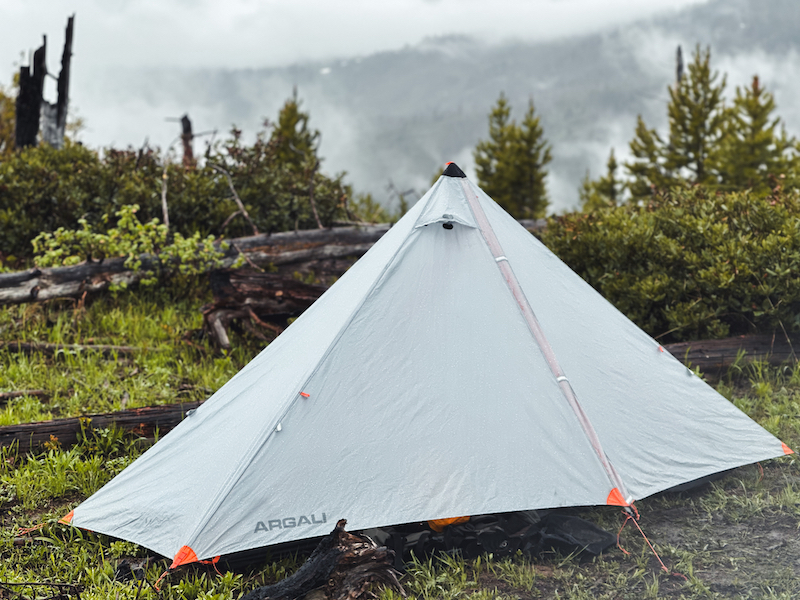
This was remedied, however, every other night of the spring trip by giving the outer tent 3” or more of vertical space off the ground. No rain got inside, and the condensation was significantly improved in the mornings.
Internal Size
Since most of us are used to making a 2-person tent our daily driver, a lot of folks have asked about sizing on this 1-person set up. Since it rained on all my trips, I put all my gear under the vestibule, my sleeping pad and bag, and had nearly three feet of head space where I put a couple miscellaneous items overnight.
Granted I have proportions like Gimli at 5’7” and 180 lbs., but average-statured people wouldn’t have a problem fitting inside the tent comfortably. My spring hunting partner, who stands at 6’2”, confirmed this for us while we were on the mountain. We both were able to sit up inside the tent on either side of the trekking pole while boiling water between us with our legs sticking out of the insert into the vestibule area to make breakfast and dinner when it was raining on us.
Someone who is bigger-boned should remember to pitch the tent, get it tight on the outside, then go around to the insert attachment points and tighten them up after the fact. Doing so pulls the mesh inside more taught and gives more head space inside.
I even pitched the tent and insert tight enough I was able to string a line of pea cord between two attachment points on the mesh and hang my socks and pants out to dry during rainy periods both on spring and summer trips.
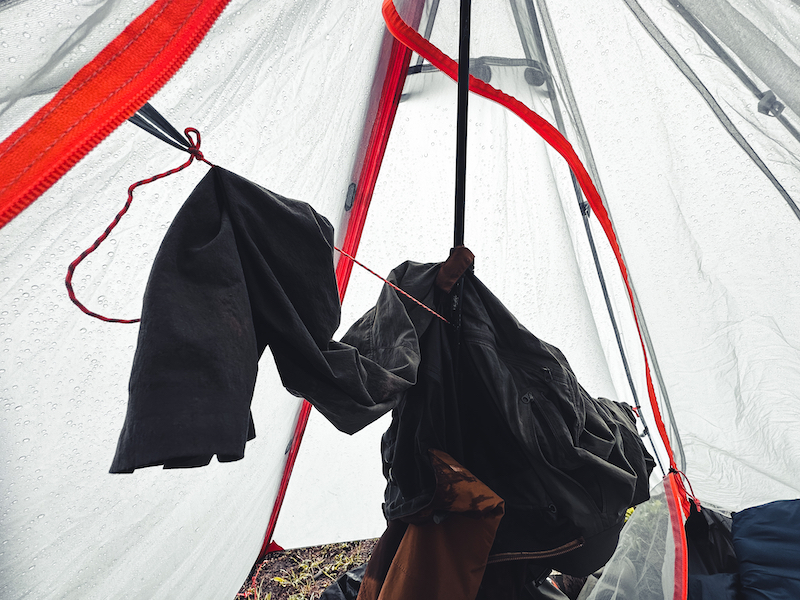
Sturdy When Damp
Much of Wyoming has received significant rainfall this year, with some places over 200% of precipitation in 2023. It felt like all those extra rainy days occurred whenever I brought the Owyhee out to the mountain.
Luckily, all the Argali tent fabric is a no-sag Ripstop SilPoly fabric. When I compared my tent to the other standard freestanding tents my hunting buddies were using, there was a noticeable difference in the tightness between the two. Both other two tents were standard 2P tents by Marmot and Big Agnes, and both succumbed to major sagging issues.
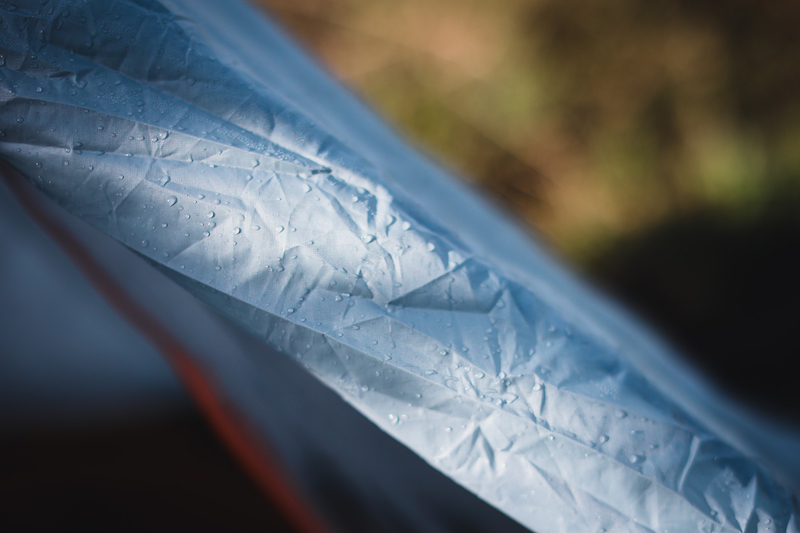
In the spring, the all-day drizzles resulted in my hunting partners’ tent flapping in the wind and collapsing in on itself while the Owyhee stayed tight and continued to maximize the inside space. On our summer sheep country trips, every evening resulted in thunderstorms that would douse our tents; however, the sun would come out and dry the outer fabric of the tents before dark like clockwork.
Caution When Hot
If you want to have a mobile sauna like Joe Rogan, pitch this tent close to the ground and put it in the middle of a sun beam at 10,000 feet.
After finding a few sheep while scouting for a ewe hunt in July, my buddy and I took a midday mountain nap at camp. While it was cool when I crashed, I woke up covered in sweat and feeling like an ant under a magnifying glass. The advantage is the tent conducts heat in a way that dries out gear, clothes, and the tent itself, very quickly.
If you do not remember to deflate your sleeping pad, you could easily end up with a sleeping pad popping in this tent during the middle of the day (probably a few melted Snickers, too). Be sure to anticipate the extra heat during the day if you’re using this when temps get into the 70’s or higher and it’s going to receive full sunlight.
In the future, I will be pitching this tent a little higher off the ground in warm conditions, as well as aiming for a spot that will be shadier in the middle of the day just for better temperature management, and enjoyable mountain naps.
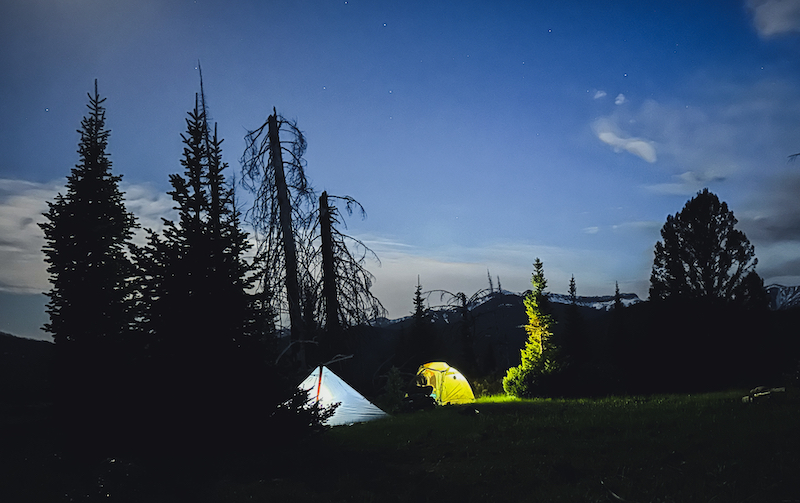
Conclusion
My tent quiver right now includes the Argali Owyhee 1P tent for warmer-weather adventures on my own. And the Absaroka 4P tent I reviewed here for when temperatures drop and I want to warm up with a camp stove at night. Or when hunting with a partner. For me, this combination of two tents accomplishes all the hunting conditions I commonly find myself in, and likely is the same for most western hunters out there.
I do not see myself in the market for another tent for the foreseeable future, and if the end of days comes our way, I suggest you get yourself an ultra-sturdy and ultralight Owyhee 1P shelter. Order here
Comment on this review or ask Jaden questions here.
Check out the rest of our sleep system articles.




















